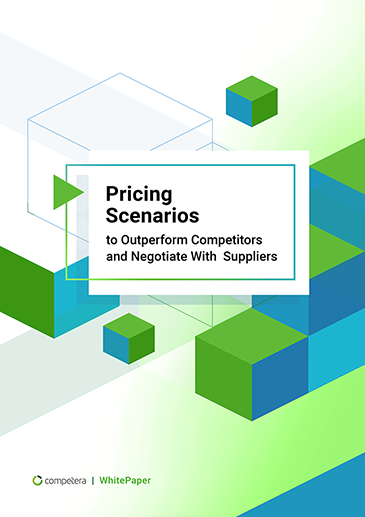
We’ve already uncovered scenarios for profits and turnover increasing. In this white paper, we discuss the algorithms that retailers use to outperform their competitors and to negotiate suppliers.
At the end of this white paper, you’ll find a list of data that retailer needs to deploy scenarios efficiently; the tools to work with pricing; and useful materials on this topic.
The script helps to work effectively with key competitors’ prices. The product prices are equally set by one of the key competitors while it has the goods in stock. If the products of this competitor are not available for buying, the prices are set at the level of the second key competitor; when the second competitor is out of stock, prices are adjusted by the third, etc.
The cost of the items is set to the minimum level among competitors. If a rival with a minimum price runs some kind of promotion (free gift, discount, etc.), we decrease the price by N%. With the support of an active advertising campaign, this scenario helps the retailer gain a part of the competitor’s audience.
In this scenario, the price is set automatically less than the minimum price among competitors. In a case when the new price differs from the previous one by more than 25%, the manager receives alert about deviation. The scenario helps the retailer stay competitive and keep profits if one of the competitors starts aggressively dumping at the same time.
If the MAP is above the minimum price among competitors, the algorithm suggests setting the MAP for the product. A more detailed repricing algorithm can be set. E. g., if N or more of competitors do not comply with the MAP, the script suggests setting a minimum competitive prices.
Helps to identify unprofitable prices set by suppliers. If the competitor’s minimum price is lower than retailer’s cost, the retailer receives a “non-competitive purchase” alert. It’s a useful alert for supplier’s prices negotiation.
This scenario helps not only to collect non-competitive purchases data (see the previous scenario) but also to obtain the readymade desired purchase prices for sending them to suppliers.
In order to effectively work with the pricing scripts, you need high-quality (without errors), relevant (freshly collected at the time of the repricing) and correct data collected on aggregators and on competitors’ websites.
So, to work with the scenarios discussed earlier, retailers need the following information:
Product data: stock availability, price, cost, KVI-positions
Business goals data: minimum markup, planned markup, turnover and margin plan, etc...
Competitor’s data: prices, stocks, promotions
By integrating this data into the scenario and analyzing its performance, you can build a Price Index report to understand how the value of the product affects its sales. It will help you track the effectiveness of your pricing and the impact of competitors even more effectively.
The simplest tool for working with pricing scenarios is, of course, an Excel spreadsheet. However, since this tool has far more disadvantages than advantages, it’s much more efficient to use services specifically created for this purpose.
The Price Management product, as part of the standalone pricing platform, Competera, integrates all of the internal and external data that was received and visualizes them by repricing the goods according to the pre-set rules in the scenarios and notifying managers about the opportunities to optimize pricing as well as the failure of scenarios. For most scenarios, you need to install limiting scenarios that will monitor the correctness of their execution. To calculate the payback rate of such a tool, contact our pricing experts.
If you want to know which of the above repricing rules will be the most effective for your online store, chat with our pricing expert — he will answer all of your questions.
to send it to colleague or friend

E-commerce Germany award

Constellation

Crozdesk

London Tech Week

Forrester

G2 Crowd
From now on we will be bringing you all the latest retail news and updates right to your inbox
Check our Use cases, Case Sudies, Pricing HUB, Blog or chat with our pricing community manger.